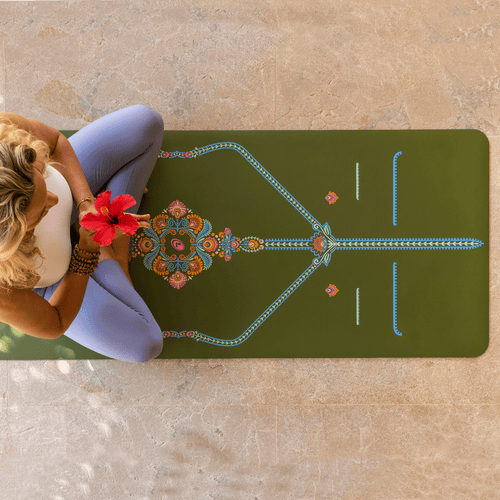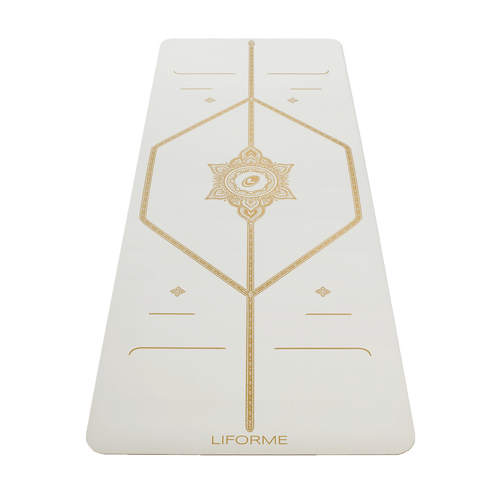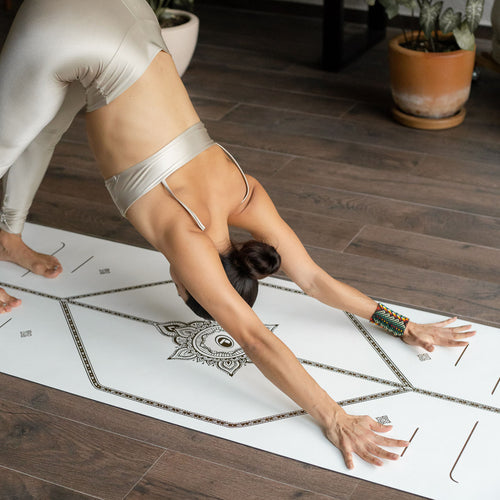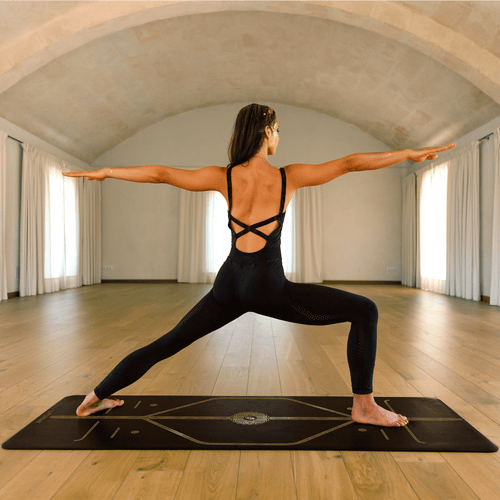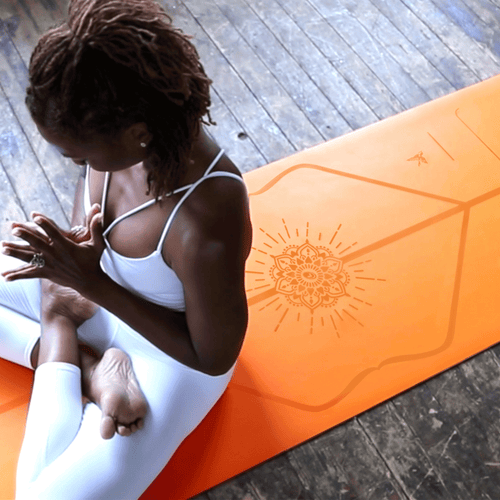Sehen Sie das Kuhgesicht in Form dieser Pose? Im Licht auf Yoga, B.K.S. Iyengar schreibt, dass ein Gomukha auch ein Musikinstrument ist, das an einem Ende breit und am anderen eng ist.
Gomukhasana gerät in einige sehr schwer zu strenge Bereiche Ihres Körpers, einschließlich der äußeren Oberschenkel, der Schultern, der Brust und des Rückens. Requisiten, einschließlich eines Riemens und etwas, auf dem man sitzen kann, können sehr hilfreich sein, um den größten Nutzen aus dieser Haltung zu erhalten.
Kuhgesichtspose -Grundlagen
Sanskrit Bedeutung: Go (Kuh) Mukha (Gesicht) Asana (Pose)Yoga -Ebene: Dazwischenliegend
Pose -Typ: Sitzend
Vorteile der Kuhgesichtspose:
• Verlängern Sie die äußeren Oberschenkel und Gesäßmuskeln.
• Streckt die Latissimus Dorsi -Muskeln Ihres Rückens.
• Streckt die Deltamuskeln Ihrer Schultern.
• Streckt die Brustmuskeln Ihrer Brust.
• Streckt die Trizepsmuskeln auf dem Rücken Ihrer Arme.
Anfängertipps
1. Verwenden Sie einen Riemen
Viele Menschen finden die Aussicht, dass sich ihr Hände hinter ihrem Rücken entmutigend treffen. Anstatt diesen Teil der Pose zu überspringen, verwenden Sie ein Riemen, ein Handtuch oder einen Riemen zwischen Ihren Händen, um die Verbindung herzustellen. Dies gibt Ihrem Körper einen Weg zu folgen und beginnt, die engen Bereiche der Brust, der Schultern und des Rückens zu öffnen.
2. Stapeln Sie Ihre Knie
Wenn es schwierig ist, beide Knie an Ihrer Mittellinie auszurichten, verwenden Sie eine Decke oder blockieren Sie unter Ihrem Hintern, um Ihren Sitzplatz anzuheben.
3. Halten Sie Ihren Kopf hoch
Der Druck aus Ihren Armen kann Ihren Kopf nach vorne schieben. Versuchen Sie, Ihren Kopf zurück in Ihre Arme zu drücken, um Ihren Hals mit Ihrer Wirbelsäule ausgerichtet zu halten.
4. Jede Seite ist anders
Es kann einfacher sein, sich Ihren Händen anzuschließen und/oder Ihre Knie auf der einen Seite zu stapeln als auf der anderen. Das ist total in Ordnung. Versuchen Sie, den Unterschied ohne Urteil zu bemerken.
Schritt-für-Schritt-Anweisungen
1. Beginnen Sie mit Händen und Knien.
2. Bewegen Sie Ihr rechtes Knie auf Ihre Mittellinie (Zentrale Linie auf Ihrer Lebensmatte)
3. Überqueren Sie Ihr linkes Knie hinter Ihrem rechten Knie.
4. Trennen Sie Ihren rechten Fuß nach links und Ihren linken Fuß nach rechts.
5. Gehen Sie mit den Händen zurück, um Ihren Hintern im Raum zwischen Ihren Füßen zu beruhigen. Nehmen Sie eine gefaltete Decke oder einen Block unter Ihren Sitz, um sie zu heben, wenn sie nicht zu Boden kommt.
6. Aktivieren Sie beide Füße, um Ihre Beine zu engagieren.
7. Ihr rechtes Knie befindet sich oben, das bedeutet, dass Ihr rechter Arm zur Decke hebt. Wenn Sie einen Riemen benötigen, nehmen Sie ihn jetzt in Ihre rechte Hand.
8. Biegen Sie Ihren rechten Ellbogen und luhen Sie Ihren Unterarm hinter Ihrem Kopf. Ihr Ellbogen bleibt auf die Decke gerichtet.
9. Biegen Sie Ihren linken Ellbogen und nehmen Sie die linke Hand in die Mitte Ihres Rückens. Ihr linker Ellbogen zeigt auf den Boden.
10. Wenn sich Ihre Hände hinter Ihrem Rücken treffen, schließen Sie sie zusammen. Wenn Sie einen Riemen in der rechten Hand haben, ergreifen Sie ihn auch mit der linken Hand.
11. Halten Sie Ihren Kopf hoch und Ihren Blick zum Horizont.
12. Entfernen Sie nach mehreren Atemzügen Ihren Verschluss und kehren Sie zu Ihren Händen und Knien zurück, um die Pose auf der anderen Seite zu wiederholen.
Vorbereitungspose

Welpenpose Öffnet Ihre Brust und Schultern, um sich auf die Kuhgesicht vorzubereiten.

Tun Down Hunde geteilt Um Ihren Rücken, Ihre Brust und die Hüften, Beine zu dehnen
Gegenstellung

Katzenkuh strecken Helfen Sie dabei, Spannungen von hinten freizugeben. Sie können sie vorher, danach und zwischen der Kuhgesichtspose machen.
Warum wir Kuhgesichtspose üben
Bei Yoga geht es darum, auf Teile Ihres Körpers zuzugreifen, die eng und nicht ausgelastet sind. Gomukhasana veranschaulicht dies mit seiner einzigartigen Form und Ausrichtung. Wenn Sie neu im Yoga sind, ist dies wahrscheinlich keine Position, die Sie zuvor gemacht haben. Das macht es schwierig und lohnend.










